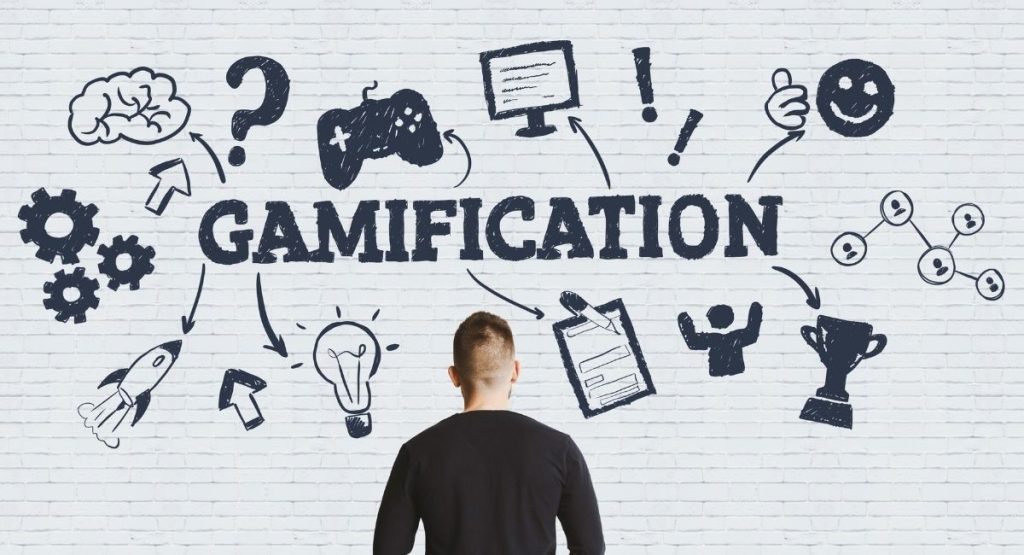In education, gamification is a concept that is highly scalable and modular. This method includes game element design into the learning process to make it more interactive and engaging for students. Also, gamification has become a popular trend in the educational sector as most educators want learning to be more enjoyable and engaging for the students.
What is Gamification in Education?
Gamification in education is a great innovation that has successfully supplemented traditional education. So, let’s see how gamification transforms learning experiences globally.
Reward System:
Gamification and education include a reward system introduced as a sense of achievement for students regarding the subject they are studying. This includes rewards like badges for special levels. Also, points are given as a reward to unlock special exams, quizzes or special courses like coding etc. This reward system keeps the students more motivated and engaged for better progress.
Feedback:
Feedback is a very important part of studies and the learning process. All the processes like the results after the exams, viewing of the student’s answer sheets, the grades and the teacher’s remarks are examples of student feedback.
In addition, gamification in education allows instant feedback for students. They learn immediately about what they said or did wrong during any session. The immediate feedback helps in understanding the mistakes. Also, it quickens the pace of learning.
Challenge or Quests:
This includes problem-solving, simplified and more fun-inducing parts of quizzes or exams with gamified elements. This reward keeps students motivated as they progress. This helps the students to observe their improvement in the educational journey and their achievements.
Leaderboard:
Like the traditional video games, the leaderboards are also an important part of gamification in education. It displays the student’s performance in their courses regarding the subjects. This helps the students to be updated. Moreover, they become eager to see their ranks and points increase on the leaderboard.
Leaderboards act as a handy reminder for the students. A healthy competition doesn’t hurt anyone, and that’s what leaderboards bring to the table. In the leaderboard, the students can aim to one-up their friends by improving themselves and performing better in the next round of challenges and quests.
Immersive Technologies:
Educators are not limited to the usual digital tech during the gamification of education and learning content elements. Immersive technologies such as augmented and virtual reality programs come into the limelight. Thus, they bring a wave of AR/VR to education.
With these technologies, educators can bring real-world scenarios more effectively for their students than fictional elements. It can be customized to suit a course, giving the students and educators a sense of agency over the learning journey they want as part of their curriculum. Thus, all these factors made gamification an important part of the education sector.
Benefits of Gamification Learning:
Gamification in education helps students make learning more active. Children get great opportunities to participate in various activities such as quizzes, puzzles etc. These activities keep the students actively engaged and to progress. These activities also keep them focused and motivated. They are challenged to think and solve the problem when they participate in these activities.

Another benefit of gamification in the educational sector is that children learn at their own pace. It’s not like the traditional classroom system, where the students rush to cope with the other students. Here, children take their own time, work at their speed and can access the material needed.
There are different types of students. Gamification and learning can be more beneficial to those children who struggle to understand concepts because it allows them to practice and review until they feel they understand clearly.
Singapore is an example of adopting gamification and education successfully. Singapore has included gamification in education policies for over a decade, and the results are impressive. Various learning styles also implement gamification and learning.
It is used in different subjects, like history, mathematics, science and social science. This made gamification in education more valuable in India. Gamification and education are used in India in both online and offline platforms. Recently, most schools and colleges have labs and gaming rooms for students. Students engage in education through video games and other technologies in those spaces.
FAQs
What is gamification in education?
In offline and online education, gamification is a widely acknowledged concept. However, this method includes game element design into the learning process to make it more interactive and engaging for students.
What are the benefits of gamification in a classroom?
Gamification in the classroom and other fields of education helps increase student engagement. Also, it enables them to achieve fast learning with challenges, more competition, long-term retention, and motivation. So, these are the benefits of gamification in education.
What are the major reasons to implement gamification?
Gamification increases competition, which can lead to engagement. Moreover, gamification involves creativity and students’ choice, which increases engagement. It gives students instant feedback through peer feedback, progress bars, badges, teachers remarks etc.
Thus, it allows them to easily take their progress toward academic goals. This reason makes gamification a great tool to use to improve the educational experience for students.

Final Words
Experts predict that the sales revenue of global gamification will reach $32 billion. Also, they mention that the market for gamified education may reach around $358 by 2025 due to the benefits discussed above.
Most students prefer gaming learning as it has the potential to revolutionize education in India because it makes learning more fun, enjoyable and interactive. It motivates and engages the students, leading to better learning of their higher achievements. We would love to know your views on this!
So, what do you think? Will gamification in education in India flourish more? Or will it get shrunk? Share your thoughts in the comments below!



Comments 0